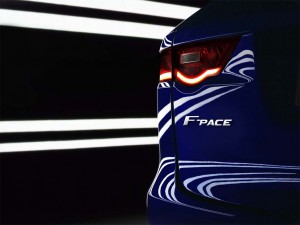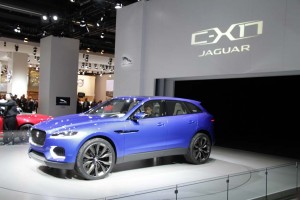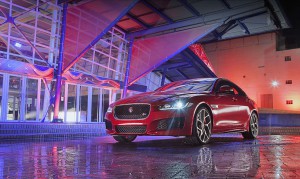Jaguar wants to keep pace with the fast-changing global luxury market, and that means it will debut its first crossover-utility vehicle, the F-Pace, at this week’s North American International Auto Show.
The new model is part of a broad array of changes planned for the luxury maker and its British sibling, Land Rover, both of which will also launch a new generation of high-mileage clean diesel options across their product lines.
The F-Pace, which will join the Jaguar family next year, is the production version of the C-X17 concept vehicle first shown at the Frankfurt Motor Show in 2013. It marks a dramatic shift in strategy at a brand that long debated even adding a station wagon to its line-up.
But the move also reflects changing market conditions, said Andy Goss, head of Jaguar Land Rover’s group sales operations. The F-Pace, he stressed, “is squarely aimed at the North American market,” where small crossovers are one of the fastest growing segments.
(Click Here for a quick guide to the most significant new products planned for the 2015 Detroit Auto Show.)
For the moment, Jaguar isn’t offering many more details about the crossover-utility vehicle, but it shares a number of basics with the upcoming XE sedan, starting with their new compact architecture. In fact, the British maker unveiled the C-X17 before showing the production XE, a move apparently meant to test public reaction to the controversial expansion of its line-up.
That also helped to underscore the flexibility of the maker’s new compact aluminum-intensive platform, which company insiders have told TheDetroitBureau.com could be used for still more new product variants.
Both the F-Pace and the XE will be powered by the new Ingenium powertrain family, which will be produced at a new plant in the U.K., and it will be shared by both Jaguar and its sibling brand Land Rover. The turbocharged engines will be modular in design, allowing a wide flexibility of offerings off the same architecture. Significantly, the Ingenium engines will be used in both in-line and transverse vehicle configurations, and in both rear- and all-wheel-drive models.
“Being configurable and flexible are the two key strands of Ingenium’s DNA because we have future-proofed our new engines from the outset,” Ron Lee, the company’s director of Powertrain Engineering, said just before the official debut of the XE sedan.
The F-Pace, meanwhile will become the first vehicle on the Jaguar side that will be offered will be offered with a diesel option, a 2.0-liter four-cylinder version of the Ingenium.
(For more on the new Jaguar Land Rover diesel program, Click Here.)
Meanwhile, like the XE, the new F-Pace will use an Integral Link rear suspension to improve stiffness, response and handling without, the maker says, sacrificing ride comfort. The front double-wishbone suspension, it adds, has been modeled after the design in use on the F-Type.The maker also claims that a new Electric Power Assisted Steering, or EPAS, system will deliver “benefits (which) include excellent steering feel, variable steering damping, ease of low-speed maneuvering and the ability to adapt to Jaguar Drive Control settings. EPAS also enables a range of Driver Aid features.”
(Buick drops its top with Detroit Auto Show launch of new Cascada convertible. Click Here to check it out.)
Jaguar’s decision to add a crossover may very well shock brand traditionalists. The marque, best known for its elegant saloon models and sensuous sports cars, debated for decades simply adding a station wagon to its product portfolio.
But crossovers have gained tremendous momentum in the luxury market in recent years, and compact CUVs make up one of the fastest-growing product segments.
The challenge has been to come up with an offering that didn’t cannibalize demand for sibling brand Land Rover’s more classic sport-utility vehicles.
The design of the F-Pace will make it clear the crossover is a very different animal. And though its all-wheel-drive system will give it the ability to handle some mild off-road situations, it will be better attuned to snowy streets than dusty trails.
(After years of turmoil, automakers are optimistic heading into the 2015 Detroit Auto Show. Click Here to find out why.)




All of the major sportscar brands have caved to the SUV cash cows. Basically the companies are selling their souls to fund production of their sportscars. It’s a sad situation caused by too many players in the game.